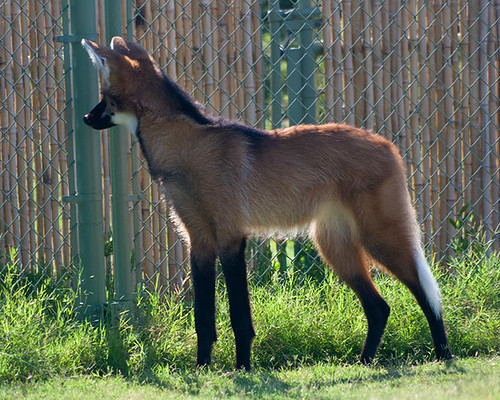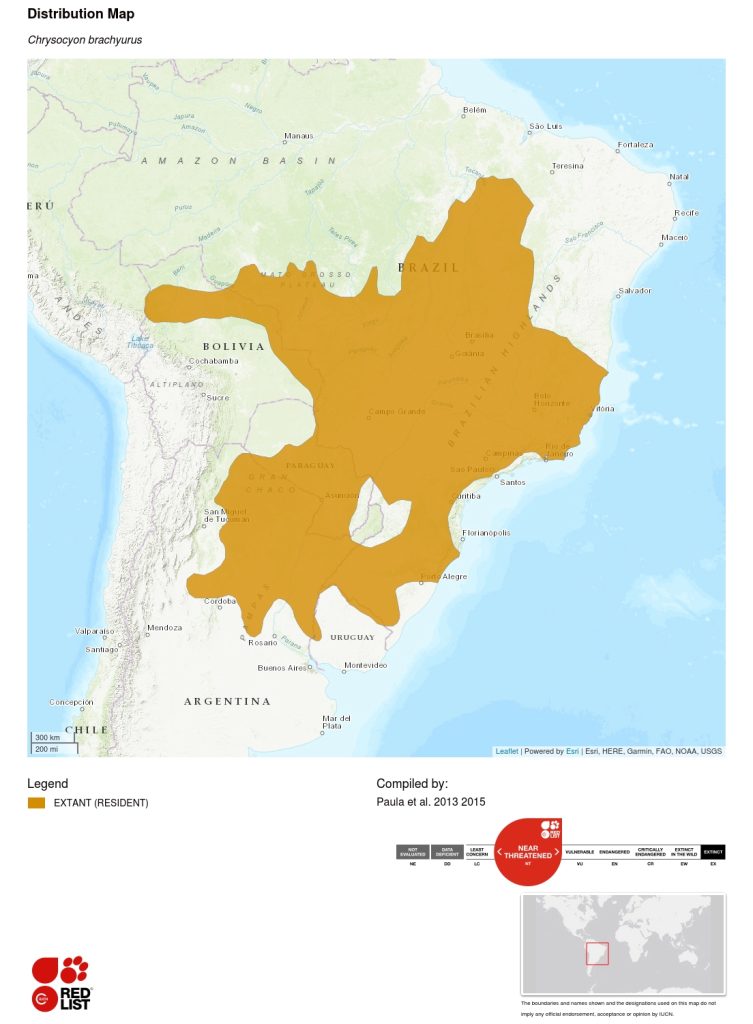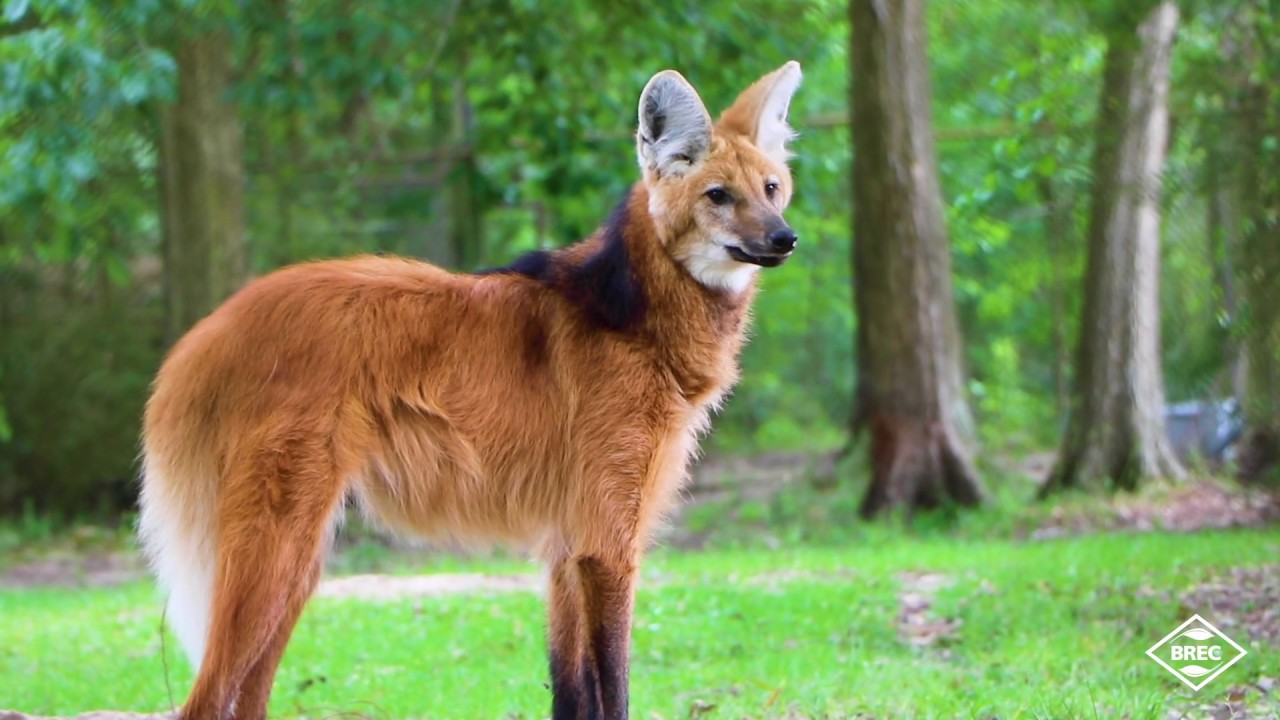Wonder what a wolf would look like on stilts? Meet the Maned Wolf. Interestingly this fascinating creature is famous for the scent of its pee.
With physical characteristics that mimic a shaggy-haired, long-nosed fox, the Maned Wolf mainly resides in the grasslands and scrub forests of South America.
Here are 10 more interesting facts about the Maned Wolf that you’ve never heard of.
Maned Wolf Key Highlights
- The Maned wolf is the tallest wild canid in the world. Its incredibly long legs put it at a max height of 35 inches. It’s also one of the only Wolf species that does not howl or live with each other in packs.
- While it is considered a fierce predator of small mammals like Armadillos and rodents, one-half of the Maned Wolf’s diet is made up of plants and fruits. Its pee also famously smells like Marijuana.
General Info About Maned Wolf
| Habitat: | Grasslands, Scrub Forests |
| Location: | South America |
| Lifespan: | Wild: 15 years, Captivity: 20 years |
| Weight: | 45 to 55 lbs |
| Diet: | Leaves, fruits, roots, bulbs, armadillos, insects, birds and rodents |
| Predators: | Jaguars and Pumas |
| Size: | 3.9 – 4.5 ft inches (90 – 115m) |
| Top Speed: | 47 mph (75 km/h) |
Learn more by reading our ultimate guide to the Maned Wolf!
Top 10 Facts About Maned Wolf
1. The Maned Wolf is Not Actually a Wolf

Despite its name, the Maned Wolf isn’t technically categorized as a wolf. Scientists first thought that the canid was actually a fox since it had an uncanny resemblance to foxes.
However, its circular pupils do not mean that it belongs to the fox species, either, because real foxes have elliptical-shaped, slit-like pupils.
Its distinct physical and anatomical features actually make it impossible to categorize it into any species of fox, wolf, dog, or coyote.
2. It is the Tallest Wild Canid in the World
Fully grown Maned Wolves stand at a maximum height of 35 inches, making the species the tallest wild member of the canine family.
Despite the difference in height, Maned Wolves actually look visibly smaller than other popular wolf species, such as Grey Wolves.
Mainly because a Maned Wolf can only weigh up to 50 pounds. Meanwhile, a Grey Wolf’s weight can go up to 175 pounds.
3. The Maned Wolf’s Pee Smells Like Marijuana
Unlike other wolf species, Maned Wolves don’t primarily communicate through howls or barks. Instead, they communicate through scent.
Specifically, they use their pee to mark their territory. However, a Maned Wolf’s pee is quite different from that of your average canine.
The urine it releases is actually made up of a combination of pyrazines that give the pee an odor similar to that of marijuana.
4. It has Three Main Vocalizations
Unfortunately, much of what we know about Maned Wolves comes from identifying and analyzing their fecal matter. Which means we don’t know much about the canid’s mating life.
What scientists have been able to figure out, however, is that the animal communicates with its mate over long distances through a booming roar-bark.
Plus, these canids have been known to produce a low growl when angered and with high-pitched whines when greeting other members of their species.
5. The Maned Wolf is a Solitary Animal
What’s the number one thing almost everyone knows about wolves? They form packs! Well, that’s not the case with Maned Wolves.
In fact, apart from coming together during the months of April through June, even a monogamous pair of Maned Wolves who’ve mated for life will rarely interact with each other.
However, when the time comes they do agree to defend their permanent territory together. Their territories usually span around 15 square miles.
6. A Newborn Maned Wolf’s Coat Turns Lighter as It Grows up
A Maned Wolf pup is born with a dark brown coat. In fact, their coats are so dark they almost look black. As they grow older, the coats start developing a reddish-brown hue that makes them look lighter.
Their legs, however, still remain as dark as they were at the time of their birth for the rest of their lives. The dark color of their manes doesn’t change either as they grow.
7. Its Mane Stands Erect at the First Sign of Danger
The Maned Wolf’s mane is actually an essential tool for the animal’s survival. When threatened by a predator or a rival species, the hairs that make up the mane will stand erect.
This makes the Wolf seem more menacing and larger. The Maned Wolf will also arch its back and threateningly lower its head to appear even more dangerous.
8. The Maned Wolf’s Activity Pattern Changes Seasonally and By Region

The Maned Wolf is generally characterized as a crepuscular animal, meaning it mainly comes out during dawn and dusk. While that may be true for some Maned Wolves, their activity pattern actually depends on the season and region they’re living in.
We’ve already mentioned how these canids are primarily concentrated in South America. But what we did not tell you is that their behavior differs depending on the region they’re living in.
For example, Wolves living in Brazil tend to roam about at any time during the dry season and become nocturnal in the wet season. In comparison, Wolves living in Bolivia tend to become nocturnal in the dry season and diurnal in the wet season.
9. Surprisingly, Maned Wolves Are Omnivores
While Maned Wolves do hunt small mammals, including birds, armadillos, and rodents, wild fruits and vegetables tend to make up one-half of their diet.
Their favorite vegetation to eat is roots, bulbs, and a unique tomato-like fruit given the name Wolf apple (named after Maned Wolves themselves).
10. They Eat Each Other’s Puke
Similar to what happens with most bird species, Maned Wolf chew their food before feeding it to their pups.
What’s more interesting about this little fact is that when observed closely, it was found that the pups often went to their male parent to regurgitate food for them.
Learn more by reading our ultimate guide to the Maned Wolf!


